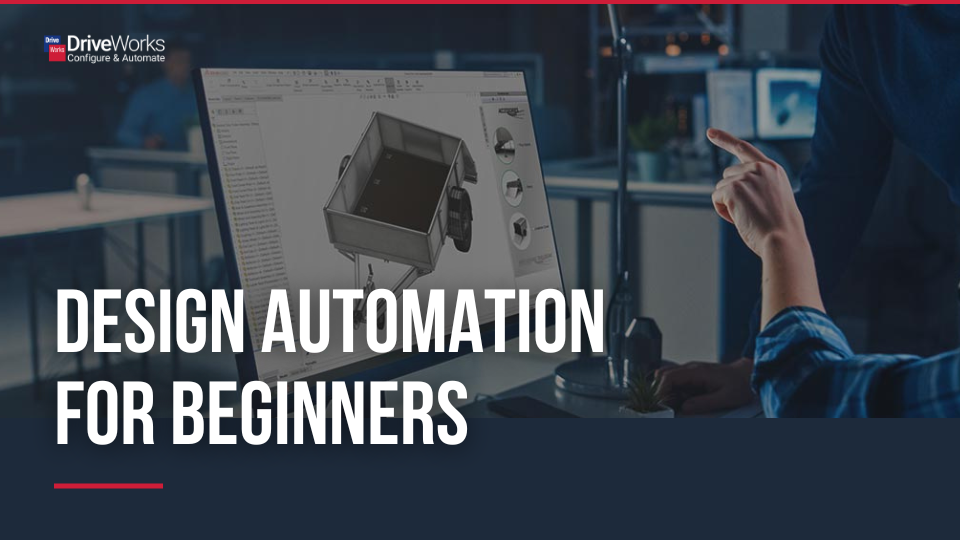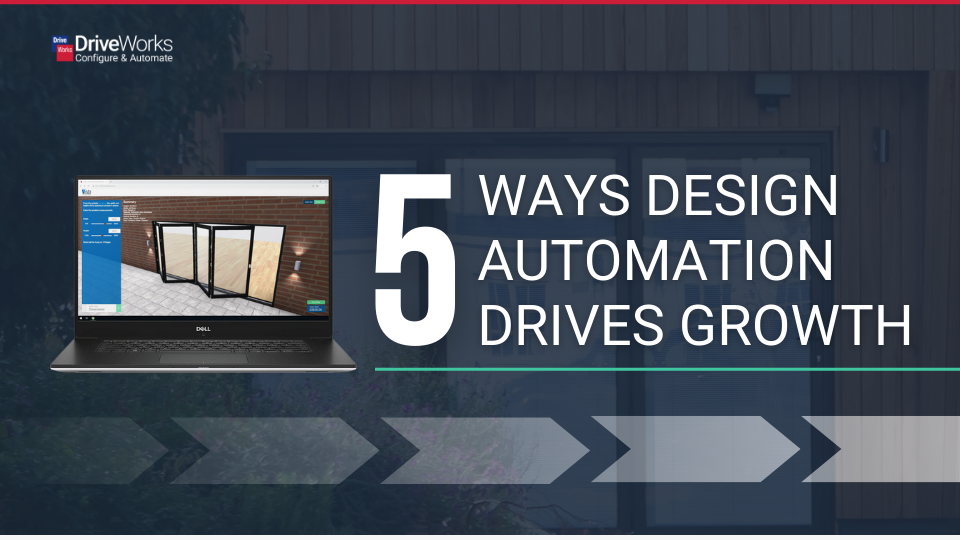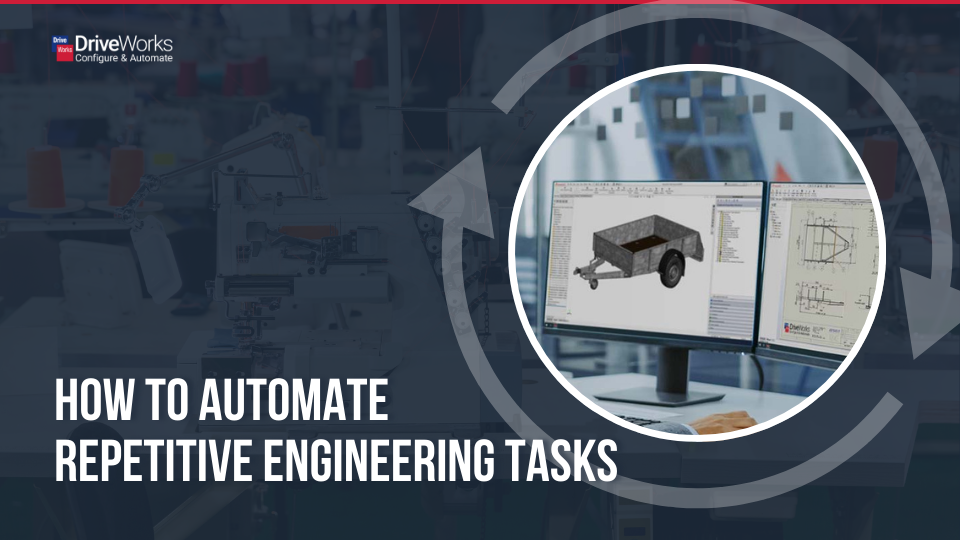If you’re a manufacturer of custom products, you’re probably familiar with the challenges of creating accurate designs and quotes, at scale. Design engineers are often under pressure to manually create large volumes of CAD drawings quickly. This can lead to errors, rework, backlogs, and delays. Design automation removes much of the manual work associated with traditional CAD workflows. By automating time-sensitive and repetitive upfront activities, manufacturers produce more designs, in less time, and design engineers have more time to focus on higher-value work such as new product development.
What is design automation?
Design automation is the use of software tools and technologies to automate repetitive and time-consuming tasks within the design process. For design engineers in custom manufacturing, it means creating systems that can automatically generate CAD models, drawings, BOMs, and additional manufacturing documents and data, all based on user-defined inputs.
Rather than re-drawing the same component with slightly different dimensions for every new design request, design automation automatically creates the new design. Design automation technology works on the rules and constraints set by the people who know your designs best – your design engineers.
The benefits of design automation for custom manufacturing
Faster design cycles and increased productivity
Custom manufacturing involves producing lots of “same but different” designs. This is manually intensive and time consuming, resulting in longer design cycles and an increased risk of errors.
With design automation, those repetitive design tasks are automated, and custom design iterations are automatically generated. This removes the need for manual design revisions and speeds up the design cycle. The design automation process can produce large volumes of designs at a much quicker pace than via manual processes, resulting in more designs produced in less time.
Improved accuracy and design standardization
The risk of design errors is removed as design versions are generated from pre-set rules and parameters, guaranteeing that all designs meet configuration capabilities.
Cost savings from streamlined workflows
Streamlined workflows can lead to cost savings as a result of less rework. With design automation handling repetitive manual tasks, accuracy is improved, and rework volumes are reduced. Streamlined workflows mean fewer wasted resources, both human and material, as design engineers are freed up to work on higher-value work, such as new product development.
Key signs your business is ready for design automation
- Your design engineers are wasting too much time on repetitive tasks
- You’re struggling to meet demand
- Errors are increasing
- Slow design and quote turnaround times
- Increased configuration complexity
5 steps to implementing design automation in your business
Here are our tips for how to effectively implement design automation into your business:
1. Assess your current workflows
Start by thoroughly assessing your existing design workflows to find the tasks that will benefit most from automation. Focus on repetitive tasks with high levels of manual input and error.
2. Set your rules & parameters
Set out your design automation rules and parameters that will control your new automation process. Your rules will set out the tasks that you want to automate and the desired outcomes of each automation.
3. Train your team
Training your engineers on the new technology is key to a successful implementation. Ensuring they have effective training and the opportunity for ongoing learning will get buy-in at an early stage and make the process of adopting new technology smoother.
4. Start small
Starting with a smaller automation project enables you to test your automation processes and understand the benefit and value. It makes it easier to identify any challenges and to see how the technology can be applied to other areas.
5. Monitor & scale
Scale up your implementation to other parts of your workflow to maximize the benefits of design automation across your business. Monitor performance and adjust if necessary. Design engineering time that has been freed-up from manual repetitive tasks can be assigned to new product design and innovation.
Learn more about design automation

Design automation isn’t just for experts or big manufacturers. Anyone can start small and see immediate benefits. Design automation handles repetitive, time-consuming tasks, so you can focus on innovation and product development.

By speeding up time-to-market, cutting costs, enabling personalization at scale, freeing up time for creativity, and improving collaboration, design automation enables manufacturers to drive growth without compromising quality or margin.

Automating repetitive design engineering tasks is a smart strategy to increase productivity, reduce errors, and focus more on creative engineering work. By following a structured approach -identifying tasks, choosing the right technology, and starting small – you can effectively integrate automation into your workflows
DriveWorks design automation for SOLIDWORKS®
DriveWorks design automation solution enables you to quickly and accurately create multiple variations of your SOLIDWORKS parts, assemblies, and drawings, and deliver custom products faster and with precision. Exclusively designed for SOLIDWORKS, DriveWorks is the perfect solution to streamline your processes and stay ahead of the competition.
DriveWorksXpress entry-level design automation is included free in every seat of SOLIDWORKS.
SOLIDWORKS users looking for a more comprehensive design automation experience can also download a 30 day free trial of DriveWorks Solo. Make the most of your free trial by setting clear goals, testing key features on real projects, and making the most of a whole host of free training material. Use the time to evaluate its impact on your workflows and ensure it meets your needs. You can also set up a meeting with a technical expert from the DriveWorks team to help you get off to the best start.